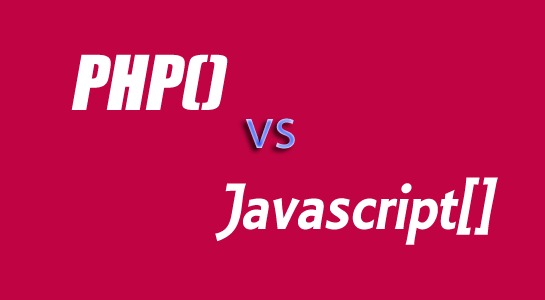Css Content
The content property is used with the ::before and ::after pseudo-elements to generate content in a document.
<!doctype html public "-//w3c//dtd html 4.0 transitional//en">
<html>
<head>
<title> new document </title>
<meta name="generator" content="editplus">
<meta name="author" content="">
<meta name="keywords" content="">
<meta name="description" content="">
<style>
p:before {
content:"start";
}
p:after {
content:"end";
}
</style>
</head>
<body>
<p>test</p>
</body>
</html>
<!DOCTYPE html>
<HTML>
<HEAD>
<TITLE> New Document </TITLE>
<META NAME="Generator" CONTENT="EditPlus">
<META NAME="Author" CONTENT="">
<META NAME="Keywords" CONTENT="">
<META NAME="Description" CONTENT="">
</HEAD>
<BODY>
<style type="text/css">
.myClass::before {
content: url(arrowbrochure.png) " My ";
}
.myClass::after {
content: "'s " attr(title) " section";
}
.email-address:before {
content: "Email address: ";
}
</style>
<h3 class="myClass" title="cool">content</h3>
<h3 class="myClass" title="sweet">content</h3>
<h3 class="myClass" title="lucious">content</h3>
<ul>
<li class="email-address">chriscoyier@gmail.com</li>
</ul>
</BODY>
</HTML>
CSS CODE
.regular-checkbox {display: none}
.regular-checkbox + label { background-color: #fafafa;border: 1px solid #cacece;box-shadow: 0 1px 2px rgba(0,0,0,0.05), inset 0px -15px 10px -12px rgba(0,0,0,0.05);
padding:7px;border-radius: 3px;display: inline-block;position: relative;}
.regular-checkbox + label:active, .regular-checkbox:checked + label:active {box-shadow: 0 1px 2px rgba(0,0,0,0.05), inset 0px 1px 3px rgba(0,0,0,0.1);}
.regular-checkbox:checked + label {background-color: #e9ecee;border: 1px solid #adb8c0; box-shadow: 0 1px 2px rgba(0,0,0,0.05), inset 0px -15px 10px -12px rgba(0,0,0,0.05), inset 15px 10px -12px rgba(255,255,255,0.1);color: #99a1a7;}
.regular-checkbox:checked + label:after {content: '\2714';font-size: 14px;position: absolute;top: 0px;left:3px;color: #43a93a;}
Following Character Entities Sheet for CSS Content code and HTML Code. Below HTML code and CSS Code very Useful for Web Developers
The content property is used with the ::before and ::after pseudo-elements to generate content in a document.
<!doctype html public "-//w3c//dtd html 4.0 transitional//en">
<html>
<head>
<title> new document </title>
<meta name="generator" content="editplus">
<meta name="author" content="">
<meta name="keywords" content="">
<meta name="description" content="">
<style>
p:before {
content:"start";
}
p:after {
content:"end";
}
</style>
</head>
<body>
<p>test</p>
</body>
</html>
<!DOCTYPE html>
<HTML>
<HEAD>
<TITLE> New Document </TITLE>
<META NAME="Generator" CONTENT="EditPlus">
<META NAME="Author" CONTENT="">
<META NAME="Keywords" CONTENT="">
<META NAME="Description" CONTENT="">
</HEAD>
<BODY>
<style type="text/css">
.myClass::before {
content: url(arrowbrochure.png) " My ";
}
.myClass::after {
content: "'s " attr(title) " section";
}
.email-address:before {
content: "Email address: ";
}
</style>
<h3 class="myClass" title="cool">content</h3>
<h3 class="myClass" title="sweet">content</h3>
<h3 class="myClass" title="lucious">content</h3>
<ul>
<li class="email-address">chriscoyier@gmail.com</li>
</ul>
</BODY>
</HTML>
CSS CODE
.regular-checkbox {display: none}
.regular-checkbox + label { background-color: #fafafa;border: 1px solid #cacece;box-shadow: 0 1px 2px rgba(0,0,0,0.05), inset 0px -15px 10px -12px rgba(0,0,0,0.05);
padding:7px;border-radius: 3px;display: inline-block;position: relative;}
.regular-checkbox + label:active, .regular-checkbox:checked + label:active {box-shadow: 0 1px 2px rgba(0,0,0,0.05), inset 0px 1px 3px rgba(0,0,0,0.1);}
.regular-checkbox:checked + label {background-color: #e9ecee;border: 1px solid #adb8c0; box-shadow: 0 1px 2px rgba(0,0,0,0.05), inset 0px -15px 10px -12px rgba(0,0,0,0.05), inset 15px 10px -12px rgba(255,255,255,0.1);color: #99a1a7;}
.regular-checkbox:checked + label:after {content: '\2714';font-size: 14px;position: absolute;top: 0px;left:3px;color: #43a93a;}
Following Character Entities Sheet for CSS Content code and HTML Code. Below HTML code and CSS Code very Useful for Web Developers
| Css Content code | Description | Display /Output sign | Html Code |
|---|---|---|---|
| \2018 | Left Single Smart Quote | ‘ | ‘ |
| \2019 | Right Single Smart Quote | ’ | ’ |
| \00A9 | Copyright | © | © |
| \2713 | Checkmark | ✔ | ✔ |
| \2192 | Right arrow | → | → |
| \2190 | Left arrow | ← | ← |
| \201C | Left double quotation mark | “ | “ |
| \201D | Right double quotation mark | ” | ” |
| \00AB | Double left-pointing angle quotation mark | « | « |
| \00BB | Double right-pointing angle quotation mark | » | » |
| \2039 | Single left-pointing angle quotation mark | ‹ | ‹ |
| \203A | Single right-pointing angle quotation mark | › | › |
| \201E | Double low-9 quotation mark | „ | „ |
| \201A | Single low-9 quotation mark | ‚ | ‚ |
| \202F | Narrow no-break space |   | |
| \0060 | Grave Accent | ` | ` |
| \00B4 | Acute Accent | ´ | ´ |
| \0027 | Apostrophe | ' | ' |
| \0022 | Quotation Mark | " | " |
| \2714 | Asterisk (star) | * | * |


